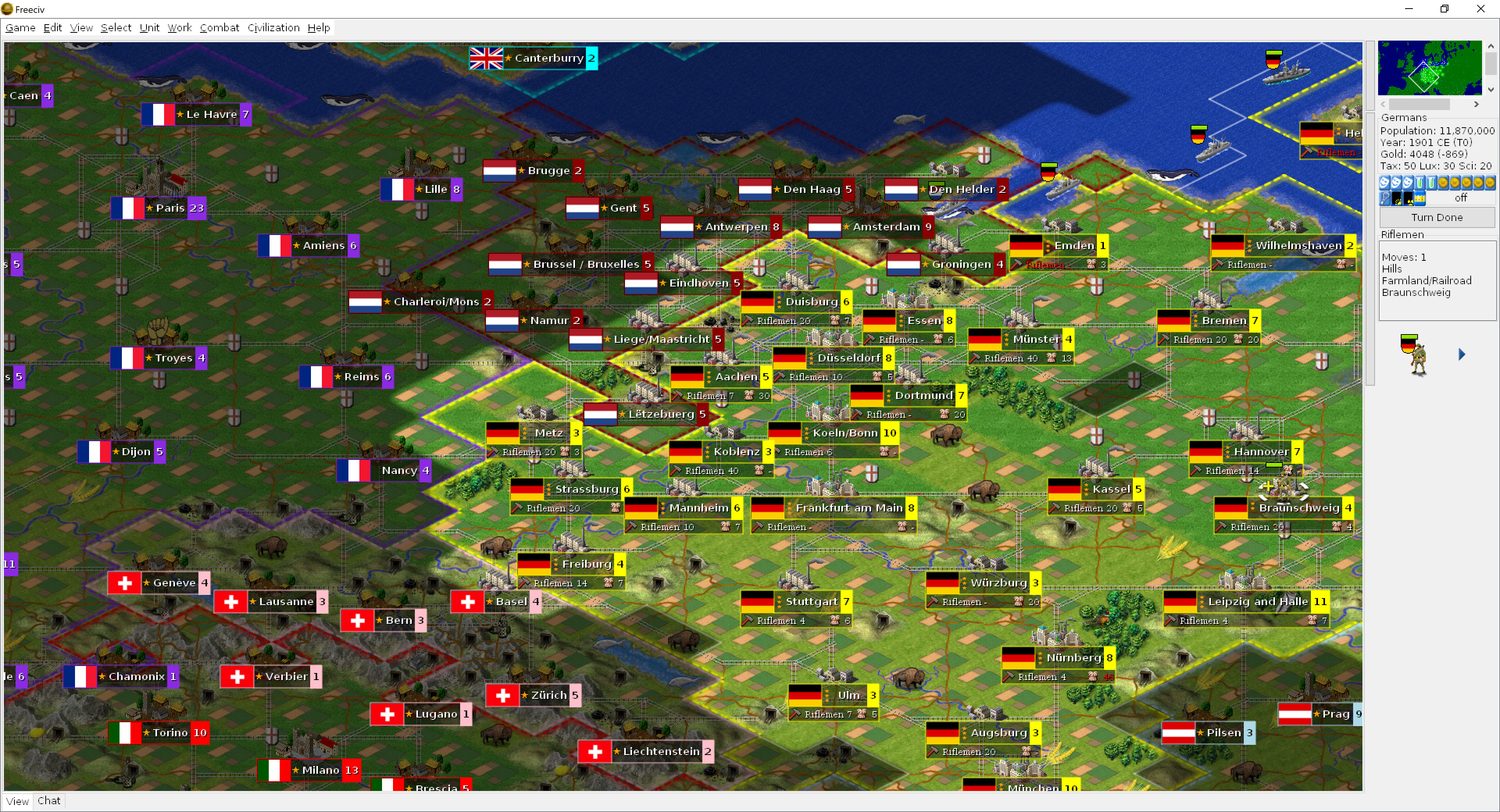



Two stripes of 18 players each across a weird snaky continent.Īlso, I ended up making my own set of terrain graphics, because the existing ones either showed too little of the map (tiles too big), distorted the view (isometric perspective on a rectangular map? Maybe that works out fine with X/Y wrapping, but I didn't want to wrap my head around it), or were just too ugly. Besides, what did I care? We had a whole world to explore! 182x182 squares on an X/Y wrapping world. But I was oblivious to any imbalances at first, since there wasn't a lot of communication between Blue and Red teams. This was a ruleset designed to skip the bullshit and get straight to the action.įor this game they were attempting a Two-Team game, and if you know anything about the snowballing nature of Civ, it is not surprising that this ended up being its undoing. Settlers founded cities that encompassed 45 tiles (7x7 with corners missing, as produced by a sqrt(13) radius), workers worked at 3x normal speed (as befitted the accelerated pace), and cities were founded with a "Free Granary" effect that lasted until size 5. Explorers ran around the map at 9 squares per turn seeing with a 3 square radius. It was quite interesting to try to learn the game all over again.Įverybody started with 5 Settlers, 5 Workers, and 2 Explorers, and all movement points were Tripled. Over the years they've refined a ruleset that is a bastard offspring of Civilization 2 and 3, and adjusted to for multiplayer. Entire rulesets can be swapped out and replaced with the flick of a wrist. Whatever FreeCiv lacks in approachability or aesthetics, it more than makes up for in it's modularity and flexibility. LongTurn is a "Turn-a-day" multiplayer game using the highly flexible FreeCiv client.

I failed in this quest, but in discussion on the forums, I got invited to join one of their "LongTurn" games that was just starting up. I had had an urge to play them but was bothered by my knowledge of how fundamentally broken Civ2's AI is, so I thought I'd see if their AI could provide some improvement. Initially I went on the FreeCiv forums hoping to find a utility that could convert some of Civ2's old scenarios to be playable in FreeCiv. An additional Workers unit can join the irrigating activity at Turn 2 and together the two Workers units will put in 1+1=2 worker-turns per turn, allowing them to finish the Irrigation on Turn 3 instead of Turn 4.I recently got sucked into a "Long Turn" game, which is basically FreeCiv's answer to PitBoss games, but with their own homebrew ruleset. If Irrigation takes 3 worker-turns to finish and one Workers unit starts it on Turn 1, there will be 2 worker-turns left on Turn 2. However, units who arrive late and start donating their work-rate on the turn they begin their work, start adding that work-rate to the completion of the task. Units whose work is interrupted before the tile improvement is completed, do not donate any worker-turns to its completion. Multiple units can combine their work-rate into producing a tile improvement. Thus, in this example it would take Engineers 3 turns to finish the Mine. (Time to build tile improvement in worker-turns) ÷ ( work-rate of the unit in worker-turns per turn)įor example, for an Engineer with a work-rate of 2 worker-turns per turn to finish a Mine whose time is 5 worker-turns:ĥ ÷2 = 2½, which rounds up to 3 worker-turns. The time it takes to finish a tile improvement will be the rounded up value from: After acquiring this base work-rate, bonuses from veteran levels and other work-rate bonus effects are multiplied over it, resulting in the final work-rate of a particular unit. The work-rate of a unit in worker-turns starts directly from its base movement rate, ignoring all movement bonuses it may acquire. (A tile improvement which takes Workers 10 turns would finish in 5 turns if done by Engineers, but the tile improvement is still said to take 10 worker-turns.) Instead, Engineers are said to have a work-rate of 2 worker-turns per turn. Unit bonuses such as the 2x work-rate bonus of Engineers are not included in worker-turn measurements for tile improvements. When measuring the time to complete a tile improvement, the worker-turn measurement assumes the Workers unit without any extra bonuses from veteran levels or work-rate bonuses. For example, if it takes 3 turns to finish Irrigation, then it can be said that Irrigation takes 3 worker-turns to finish.Īdvanced Explanations and Mechanics Units and measures The length of time it takes Workers to finish a tile improvement such as Roads, Irrigation, etc., is called a worker-turn.


 0 kommentar(er)
0 kommentar(er)
